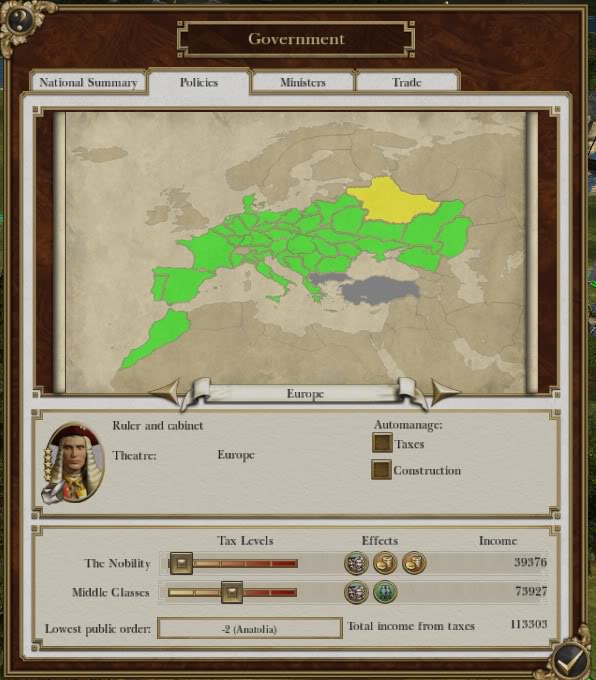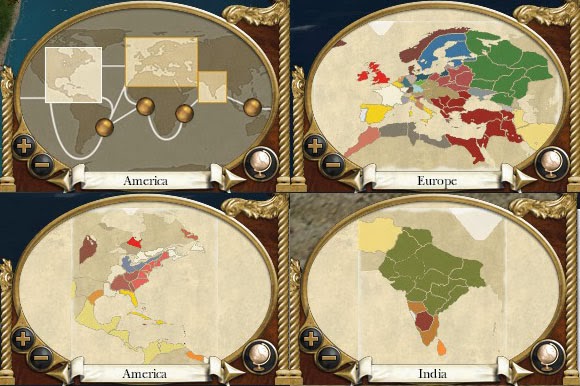
The new regional set up allows for this, forcing players and NPCS alike to station troops in all of the intractable areas, or send out armies to stop invaders trampling all over the place. In the age of gunpowder and infantry lines, battles were more often than not fought in an open field but focused on population centres. The whole point of this set up, as far as can be seen, is to open up the field, as it were. Take the big city that serves as the regional capital, and you take the region. These ‘outlying’ settlements can be taken over temporarily by invading armies without them taking the province, and any benefits that are gained are nullified. There are also other settlements in the form of resource ‘nodes’ which are predetermined and can only be upgraded for better yields. Each new ‘town’ can be given a specific task depending on what you build, whether it be research, happiness, industry or religion.

Instead of in past games, where provinces consisted of a town/castle, and a port for seaside area, this game is split between provincial capitals, towns, and other specialised settlements. Whether this is a good or a bad thing remains to be seen, but it may first be helpful to know what CA has actually done with the provincial system. Whilst the campaign map itself has grown, in some respects it has also shrunk due to the fact that provinces are larger, so in reality it balances out with previous games. To counter this, extra controls where you can exclude provinces from paying taxes, giving them a temporary boost in morale whilst you wait for your influence to truly take hold. This may sometimes make it hard to balance things between happiness and income, especially in newly acquired provinces.

Instead of setting taxes, for example, for each individual province, you set them for the whole theatre. Thankfully, Creative Assembly has streamlined certain areas for ease of use, especially when it comes to empire management. The new graphics engine gives an incredible level of detail, even if everyone does look the same.

In addition to these, you have smaller ‘trade theatres’, where there is no land up for grabs, per say, but you can use your fleets to fight for control over valuable trade nodes.īattles have shifted from all out melees to more ordered line skirmishes. The sheer scale of this new iteration can be a bit daunting at first, as you have to watch over your holdings in three separate maps. (Although America will pretty heavily colonised by the time the game actually starts in 1700.) Unlike previous Total War games, where the map was all squeezed into one section, Empire divides it up into three separate theatres – Europe, The Americas, and the Indian subcontinent, with each area nearly as big as each other. Like Rome: Total War back in 2004, Empire completely re-invents and revolutionises the series, using another new and improved engine, an expanded game world, and a whole host of other features making this the biggest and the best game of the series.Īs the name suggests, the theme of this game is ‘Empires’, and as such you get to choose from 11 of the more prominent European powers of the time, and participate in great land-grabathons that take place in the newly discovered areas of India and the Americas.
Empire total war map 1700 series#
Set in the 18th century, Empire takes the series to new heights as you once again take control of a faction of your choosing, leading them to prominence and eternal glory. For the uninitiated, Empire: Total War is the fifth and latest in the Total War series from the British-based developer: Creative Assembly.


 0 kommentar(er)
0 kommentar(er)
